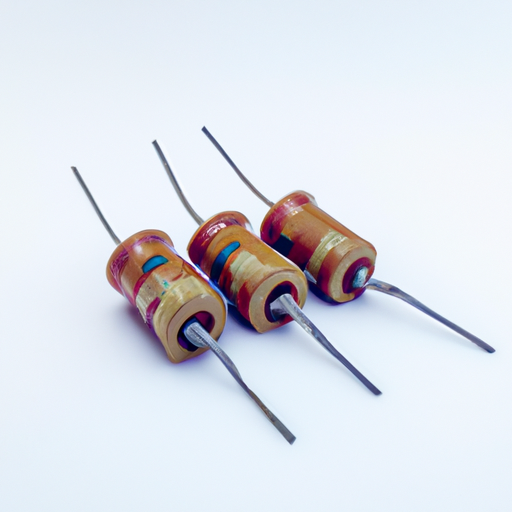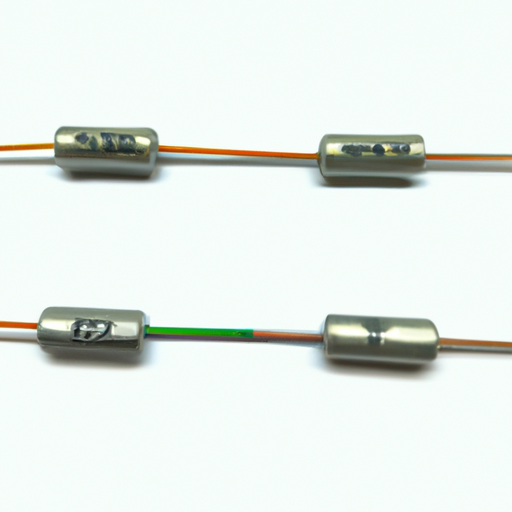What is the role of chip adjustable resistor products in practical applications?
The Role of Chip Adjustable Resistor Products in Practical Applications
I. Introduction
In the ever-evolving landscape of electronics, chip adjustable resistors play a pivotal role in enhancing the functionality and performance of various devices. These components, often overlooked, are essential for achieving precision in electronic circuits. This article aims to explore the significance of chip adjustable resistors, their working principles, advantages, practical applications, design considerations, and future trends. By the end, readers will gain a comprehensive understanding of how these small yet powerful components contribute to modern technology.
II. Understanding Chip Adjustable Resistors
A. What are Chip Adjustable Resistors?
Chip adjustable resistors, also known as variable resistors, are electronic components that allow for the adjustment of resistance values within a circuit. They are typically constructed using a resistive element and a mechanism for adjusting the resistance, such as a wiper or slider. The most common types of chip adjustable resistors include trimmer resistors and potentiometers.
1. **Description and Construction**: Chip adjustable resistors are usually made from materials like carbon, metal film, or conductive plastic. Their compact design makes them suitable for surface-mount technology (SMT), allowing for easy integration into printed circuit boards (PCBs).
2. **Types of Chip Adjustable Resistors**:
- **Trimmer Resistors**: These are small, adjustable resistors used for fine-tuning circuits. They are often used in calibration and tuning applications.
- **Potentiometers**: These resistors have three terminals and can be adjusted to provide a variable resistance. They are commonly used in applications requiring user interaction, such as volume controls.
B. How Chip Adjustable Resistors Work
Chip adjustable resistors operate on the principle of variable resistance. The adjustment mechanism allows users to change the resistance value by altering the position of a wiper along a resistive track.
1. **Mechanism of Adjustment**: In a potentiometer, turning the knob moves the wiper along the resistive element, changing the resistance between the wiper and the terminals. In trimmer resistors, a small screwdriver is used to adjust the resistance.
2. **Electrical Characteristics**: Chip adjustable resistors exhibit specific electrical characteristics, including resistance range, tolerance, and temperature coefficient. These parameters are crucial for ensuring the reliability and accuracy of the resistor in various applications.
III. Advantages of Chip Adjustable Resistors
Chip adjustable resistors offer several advantages that make them indispensable in modern electronics.
A. Precision and Accuracy in Resistance Values
One of the primary benefits of chip adjustable resistors is their ability to provide precise resistance values. This precision is essential in applications where accurate measurements and adjustments are critical, such as in audio equipment and medical devices.
B. Space-Saving Design in Compact Electronics
As electronic devices become smaller and more compact, the need for space-saving components has increased. Chip adjustable resistors are designed to occupy minimal space on PCBs, making them ideal for compact electronics like smartphones and wearable devices.
C. Versatility in Various Applications
Chip adjustable resistors are versatile components that can be used in a wide range of applications, from consumer electronics to industrial equipment. Their adaptability allows engineers to incorporate them into diverse circuit designs.
D. Cost-Effectiveness in Manufacturing
The manufacturing process for chip adjustable resistors is often cost-effective, making them an economical choice for electronic designers. Their ability to be mass-produced without compromising quality contributes to their widespread use in various industries.
IV. Practical Applications of Chip Adjustable Resistors
Chip adjustable resistors find applications across multiple sectors, each benefiting from their unique properties.
A. Consumer Electronics
1. **Audio Equipment**: In audio devices, chip adjustable resistors are used for volume control and tone adjustment, allowing users to customize their listening experience.
2. **Display Devices**: These resistors help calibrate brightness and contrast levels in display devices, ensuring optimal visual performance.
B. Automotive Industry
1. **Engine Control Units**: Chip adjustable resistors are crucial in engine control units (ECUs) for fine-tuning engine performance and emissions control.
2. **Infotainment Systems**: They are used in infotainment systems to adjust audio settings and user interface responsiveness.
C. Telecommunications
1. **Signal Processing**: In telecommunications, chip adjustable resistors are employed in signal processing circuits to optimize signal quality and reduce noise.
2. **Network Devices**: They help in adjusting impedance levels in network devices, ensuring efficient data transmission.
D. Industrial Equipment
1. **Automation Systems**: Chip adjustable resistors are used in automation systems for calibrating sensors and actuators, enhancing system performance.
2. **Robotics**: In robotics, these resistors allow for precise control of motors and other components, improving overall functionality.
E. Medical Devices
1. **Diagnostic Equipment**: Chip adjustable resistors are essential in diagnostic equipment for calibrating measurements and ensuring accurate results.
2. **Monitoring Systems**: They are used in patient monitoring systems to adjust sensitivity levels and improve data accuracy.
V. Design Considerations for Using Chip Adjustable Resistors
When integrating chip adjustable resistors into electronic designs, several considerations must be taken into account.
A. Selecting the Right Type of Adjustable Resistor
Choosing the appropriate type of adjustable resistor is crucial for achieving the desired performance. Designers must consider factors such as resistance range, size, and application requirements.
B. Understanding Tolerance and Temperature Coefficients
Tolerance refers to the allowable deviation from the specified resistance value, while temperature coefficients indicate how resistance changes with temperature. Understanding these parameters is essential for ensuring reliability in varying environmental conditions.
C. Integration with Other Components in a Circuit
Chip adjustable resistors must be integrated effectively with other circuit components to ensure optimal performance. Designers should consider the overall circuit layout and the interaction between components.
D. Testing and Calibration Procedures
Regular testing and calibration of chip adjustable resistors are necessary to maintain accuracy and performance. Implementing proper testing procedures during the design phase can help identify potential issues early on.
VI. Future Trends and Innovations
The future of chip adjustable resistors is promising, with several trends and innovations on the horizon.
A. Advances in Materials and Technology
Ongoing research in materials science is leading to the development of more efficient and durable resistive materials, enhancing the performance of chip adjustable resistors.
B. Integration with Smart Devices and IoT
As the Internet of Things (IoT) continues to grow, chip adjustable resistors will play a vital role in smart devices, enabling real-time adjustments and improved functionality.
C. Potential for Miniaturization and Enhanced Functionality
The trend towards miniaturization in electronics will likely lead to the development of even smaller chip adjustable resistors with enhanced functionality, allowing for greater versatility in applications.
VII. Conclusion
Chip adjustable resistors are integral components in modern electronics, providing precision, versatility, and cost-effectiveness across various applications. Their ability to enhance the performance of devices in consumer electronics, automotive, telecommunications, industrial equipment, and medical devices underscores their significance in the industry. As technology continues to advance, the role of chip adjustable resistors will only become more critical, paving the way for innovative solutions in the ever-evolving world of electronics.
Encouraging further exploration and understanding of adjustable resistors will empower engineers and designers to harness their full potential, driving the next wave of technological advancements.
VIII. References
For those interested in delving deeper into the topic of chip adjustable resistors and their applications, the following resources are recommended:
1. "Electronic Components: A Complete Reference for Project Builders" by Delton T. Horn
2. "The Art of Electronics" by Paul Horowitz and Winfield Hill
3. Manufacturer datasheets and application notes from leading resistor manufacturers
4. Online electronics forums and communities for practical insights and discussions
By exploring these resources, readers can gain a more profound understanding of chip adjustable resistors and their vital role in the world of electronics.






